Flagging Down the Double E’s is an email newsletter exploring Bob Dylan shows of yesteryear. Subscribe here:
On September 14, 1976, NBC broadcast Hard Rain, a concert film recorded at the second-to-last date of Bob Dylan’s Rolling Thunder Revue. Taped in Fort Collins, Colorado, the film earned its name for taking place outdoors after a days-long downpour. It’s never been released on DVD or streaming, but the footage circulates widely. For instance, right here:
The film showcases one of the fieriest performances of Bob’s career, with songs given forceful new arrangements and angry new lyrics. So today, on the 45th anniversary of that 1976 Colorado show, I cobbled together an oral history of Hard Rain, the concert and TV special (and to some degree the live album, though half of it came from a different show).
A few of these quotes are from interviews I conducted myself, mostly for last year’s Rolling Thunder show-by-show, but most aren't, and I've linked to the original sources at the end of every quote.
The failed first attempt at taping a TV special
Howie Wyeth, drums: “The rehearsals sucked in that place [Clearwater, Florida’s Bellevue Biltmore Hotel]. It just wasn’t happening. Then we did the concerts and they were filming it and it happened. That was the first day that the music started feeling right again. Bob did a really hip version of ‘Like A Rolling Stone’. He did some tunes that he hadn’t done at all.” (via)
Scarlet Rivera, violin: “The first attempt to capture it live for whatever reason didn't work. I'm really not privy to know what those reasons were. They were technical reasons, from sound equipment [which] had to be brought in. Maybe they had problems with feedback. That whole effort was never released. It forced us to do one final try to capture Hard Rain, which was the Colorado show." (via)
T-Bone Burnett, guitar: "They built these rafters all around and there were all these kids sitting in them, with their legs dangling down. The backdrop was all these dangling legs and we just took one look at it and thought, '[surely] this isn't what we're doing.'" (via)
David Mansfield, multi-instrumentalist: "I don't want to put words in [Bob's] mouth, but I imagine it seemed too sort of staged and pedestrian in terms of approach. It was right after rehearsals and things hadn't quite gelled yet." (via)
Stan Harris, director: “It’s a straight concert, no crap.” (Rolling Stone, May 1976)
Anonymous inside source: “It wasn’t what he was looking for. Dylan felt it looked like every other Midnight Special.” (Rolling Stone, later 1976)
Howie Wyeth: “Bob got into a fight with [one of] the guys that were doing [the Clearwater special]. He got into a big argument with the guy over the dinner table one night after we’d already done half of it. And then he said, ‘No! We’re not going to do it. Fuck it!’ So he decided that wasn’t the way we were going to do it, and then they decided to record it at the end [of the tour].” (via)
Rob Stoner, bassist and bandleader: “I think the deal was that Bob had the right of refusal if he didn’t like the videotape, but the terms were that he had to make good on it, at his expense, by doing his own thing to deliver to NBC.” (via)
The tour continues through the South
Bob Neuwirth, guitar: “When we did the second edition of it down south, we approached it slightly wrong and it wasn't as fresh. The New England magic wasn't there.” (via)
Claudia Levy, tour director Jacques Levy’s partner: “The first part of the tour was unbelievable. It was idyllic. It was romantic. We were all having a wonderful time, and Bob was very happy. The second part of the tour, he was like a different person. I mean, he was great on stage. There was no point in time that he wasn't really good. But he wasn't a happy camper. You know, everything starts at the top, and it filters through. And that was the case on the second tour.” (via)
Scarlet Rivera: “There was a magic to the first leg of the tour. There was a great sense of harmony amongst all the players. Although the music was as good on the second leg, I think it was a little bit less harmonious. Some element of tension wove itself in that wasn't there in the first one. Perhaps it was because Bob was going through his divorce or maybe there was some more tension with the guitar players and the band. I don't know. There was a little bit less of that magic fairydust glow on the second one for me.” (via)
Chris O’Dell, co-tour manager: “It shouldn't have happened, honestly. A good thing happened and then they tried to recreate it in a different space and it didn't work. It just wasn't the same. Nobody felt the same way about it. They should have stopped and just left it at the one.” (via)
Rob Stoner: “All of that mood stuff in the band is always set by the main guy. The train follows the locomotive. And the locomotive was dragging, discouraged.” (via)
David Mansfield: “I knew that Bob kind of had a black cloud over his head during that [1976] tour and that infected everything. By that time, there was a large entourage and a lot of us were close friends. It wasn’t dependent on Bob being in a good mood all the time.” (via)
Louie Kemp, Rolling Thunder producer: “It was a totally different vibe. Bob was very serious and he was totally into it. You can see in some of those concerts - the footage from the Hard Rain concert in Colorado, I think is amazing footage, just amazing. I think that tour, the performances were in some cases more intense than they were relaxed. It was a different atmosphere, but the shows were great.” (via)
The tour arrives in Colorado
Howie Wyeth: “All of a sudden they said we got four days off before we do Fort Collins and the record. They said, ‘You’re gonna love this. We got you in this dude ranch up in the mountains.’ And it was raining so you couldn’t go riding and it was up in the mountains so you couldn’t breathe. There was nothing to do. And we were all stuck up there... For four days we had nothing to do. And it was raining. It was dreary.” (via)
David Hill, attendee: “Dylan and company spent a few days at the Stanley Hotel in Estes Park rehearsing. The Stanley is a famous old hotel in the mountains where Stephen King came up with the idea for The Shining. It was perhaps a bit run down in 1976—it’s since been spiffed up. There’s a small auditorium, which is likely where the Rolling Thunder Revue rehearsed.” (via email)
Mike Evans, security: “We were staying at this place called the Stanley Steamer, this hotel up in the mountains that is real famous, with the old clawfoot bathtubs and stuff. I remember sitting in the bathtubs drinking brandy and things just trying to get warm.” (via)
Patricia Maher, local resident: “Estes Park was a very conservative town, and while some of its citizens knew who Bob was, many didn’t - or didn’t care. It was a very small mountain community, which is why Dylan came up there to rehearse in the first place. They knew there wouldn’t be tons of fans hanging out. They’d have been swamped if they rehearsed in Fort Collins.” (via)
Mike Evans: “Fort Collins was angst in a lot of ways. I mean again Neuwirth had taken me off on a horse even though I was in no condition to go off on this horse. I had been up all night drinking, although not to the point of inebriation, when all of a sudden he comes by before sun up and he’s got two horses, ‘Let’s go!’ And we’re off on this trail!” (via)
Rob Stoner: “Bob was really hitting the bottle that weekend. That was a terrible fuckin’ weekend. There was a lot of stuff that makes Hard Rain an extraordinary snapshot—like a punk record or something. It’s got such energy and such anger.” (via)
Patricia Maher: “The night before the show, we all went up to the Stanley to listen to them rehearse in the concert room and music hall. We were able to watch them, because it was almost impossible to close off a public room in the Stanley. They were so loud, they literally shook the place.” (via)
Bob’s wife Sara shows up
Arthur Rosato, sound: “She was at Fort Collins and they had the kids there. Bob told me to make sure the kids didn't get on camera. I had to keep them out of the range of the cameras." (via)
Joan Baez, singer: “Sara showed up late in the tour, wafting in from a plane looking like a mad woman, carrying baskets of wrinkled clothes, her hair wild and dark rings around her eyes... Bob was ignoring her, and had picked up a curly headed Mopsy who perched on the piano during his rehearsals in a ballroom off the main hotel lobby. Sara appeared airily at the front door dressed in deerskin, wearing her emerald green necklace and some oppressively strong and sweet oils. She greeted me with a reserved hello and talked distantly about nothing in particular, all the while eyeing the closed door to the ballroom. I had the impression that she had her magic powers set upon that room, and that whatever plans Bob had would soon be foiled. The door to the room opened and Mopsy tumbled out.
“‘Who's that?’ said Sara, looking at the girl sideways with her big, lazy, suspicious eyes.
“‘Some groupie. No one likes her,’ I answered. It was true. We liked the tightrope walker, who vanished quietly when Sara was around, but Mopsy was a lawless intruder and I realized how much I supported Sara.” (via)
Rob Stoner: “I don’t know what the fuck came over him... It was a big void in his life. The marriage was falling apart and this thing which had seemed so exciting and promising - Rolling Thunder - that wasn’t [working] and he couldn’t figure out why, I don’t think... It was like a mid-life crisis. He was confused and he was searching. He tried a lot of chicks; he tried one chick; he tried [every] kind of chick.” (via)
Joan Baez: “That night we had a disjointed party for him complete with a cake, but he got drunk and looked dead tired. I decided to walk him to his room. He started flirting ever so slightly, and I told him to wait right where he was and dashed off to find Sara and delivered her to Bob. They both laughed sheepishly and looked mildly pleased, and I said ‘Happy Birthday,’ and went back to my room quite proud of myself.” (via)
Joel Bernstein, guitar tech and photographer: “Sara and the kids came to the Fort Collins show - I seem to recall that even she had a turban on. And I do have a shot of Bob on that day onstage with Jesse underneath the stage - a vertical shot with the two of them, Jesse, aged eight, looking at me.” (via)
“Rag Rock”
Joel Bernstein: “When he first showed up at rehearsals he was wearing a yarmulka. It wasn't part of a look, it definitely wasn't wardrobe, it was a religious thing. It wasn't a bandana, it was a yarmulka.” (via)
T-Bone Burnett, guitar: “Just before Dylan left on the second leg of the tour, he was putting a brick wall round his house and all the bricklayers had those rags 'round their heads to stop them getting concrete and various bits of plaster or whatever in their hair. Dylan went out there to help the guys and out of that we got the babushka headdress, or whatever [the] hell it's called, and then he just kept it on for the road.” (via)
Arthur Rosato: “It was a personal thing he never talked about it. And then pretty soon all of the musicians were wearing them and you thought: is this out of respect for Bob's beliefs? Bob's whole thing at that time was pretty much that magical aspect.” (via)
Joan Baez: “Bob was now wearing a sh'mata in place of the pretty cowboy hat, and everybody was wandering around with bandanas and torn sheets tied around their heads. I didn't succumb until the end of the tour, and then only with an eight-foot-long red silk scarf from Spain, wrapped into a turban and adorned with a gaudy brooch over the center of my forehead, the spot where rajahs stuck their royal jewels.” (via)
T-Bone Burnett: “The story goes that when [the Hard Rain footage] finally was sent to New York City, for the network to look at, the head of the company saw the footage and said, 'I can tell you one thing: he is no Cary Grant.' There, on some executive's TV screen, was this guy with a rag tied round his head! By that time, the '76 tour had become Rag Rock.” (via)
A Hard Rain
Rob Stoner: “We were supposed to do the gig [on] two or three consecutive days—each time the rain date was supposed to be the next day—but it was pouring for days and days and, meanwhile, it’s costing Bob a lot of bread. Everybody’s holed up in this little hotel up in the mountains in the middle of nowhere, with nothing to do except get drunk … Here’s the last gig [sic] and it’s taking forever to do it. The boss is getting in a progressively shittier mood … Eventually they just decided to go and do it in the rain.” (via)
Louie Kemp: “It had been a pretty miserable morning. We had a big film crew from NBC there to tape the concert, but the rain just would not let up. I paced around, nervous that the whole thing would be a washout. But when I looked out at the crowd forming in front of the stage, I could see that everyone was having a blast! They were sliding around in the mud and dancing in the rain. By the time Bobby took the stage, the rain had slowed to a drizzle and the energy was electric.” (via)
Patricia Maher: “The concert started at 1:00 PM and it poured rain for the next eight hours. After much dismay, we just gave up and let the rain roll down our faces. Hour after hour, you’d think, ‘This is insane. Go out to the van. This is crazy.’ But the fascination with Bob and his band was just incredible. There was no way in heck that you were going to leave.” (via)
David Mansfield: “Bob was in a pretty awful state of mind, and on top of it all, the physical conditions of the concert were grueling. Because it wasn’t just raining, it was also freezing.” (via)
Joel Bernstein: “That was a mediocre show...in fact, the Fort Collins rehearsal the day before was a much better show than the Fort Collins show itself!” (via)
Rob Stoner: “Everybody’s soaked, the canopy’s leaking, the musicians are getting shocks from the water on the stage. The instruments are going out of tune because of the humidity. It was awful. So everybody is playing and singing for their lives, and that is the spirit that you hear on that record.” (via)
David Mansfield: "For me, the Colorado Hard Rain [show] was pretty hellishly difficult. I remember playing steel guitar and it was so cold in my hands and whatever I was wearing, that my foot was shaking on the volume pedal and I couldn't get a smooth tone. Thankfully, there are such wonderful things as column limiters so it wasn't discernible but it was a really harsh environment. Physically it was cold!" (via)
David Hill: “I was a senior in high school in Littleton, Colo., at the time. I drove up with my sister and two school friends… It was pouring rain when we got to the stadium, but as I recall, the skies cleared as we waited, and by the time the concert began, I think the rain had stopped… I was a photographer on my high school newspaper, so I took my camera and shot a bunch of color slides, mostly crowd shots. I’ve included a few shots, below.” (via email)
Joan Baez: “Ten thousand people sang [happy birthday] to him in a stadium in the rain. He stuck his face into his amplifier until the song was over, and then plowed into ‘A Hard Rain's A-Gonna Fall.’” (via)
Rob Stoner: “The rain cleared up on the last fuckin’ song—it was the first time that the sun had shone in a week.” (via)
Filming for the special
Scarlet Rivera: “There was a lot of pressure on that day to get that filmed [and recorded]… This was the last possible moment for this recording to be made, and it was under the worst circumstances.” (via)
T-Bone Burnett: "Some of the guys who had been filming on the first leg of the tour came back, like Howard Alk and Larry Johnson, and filmed some more.” (via)
Joel Bernstein: “The paintings were done by Bob and Bob Neuwirth, I think just for that show. I thought Bobby Neuwirth was very full of himself, like, oh, Bob likes me. Very self-important way beyond his abilities. He always introduced ‘Mercedes-Benz’ as something he co-wrote with Janis Joplin, but I’ve never seen him get writer’s credit for that. He’d bash away at the guitar and always break strings.” (via)
Mike Evans: “We had a lot of problems with the show. They were filming there and I got to the show and they had built camera platforms where they had wanted to build them, where we had agreed to build them with the facility. But once they let the crowd in, the camera crew decided that the positions weren’t good enough and they wanted them moved. Now moving towers when you have people in, telling somebody to move from a spot that they’ve waited 24 hours in line in the rain to get to and now there’s going to be a camera platform there — that’s not an easy thing to do. So we had our own problems with that. And all the things that were going on backstage, I was aware of them. There were no secrets on this tour. Everybody down to the last man knew exactly what was going on.” (via)
Joel Bernstein: “They wanted to have some shots of Bob from the video of Fort Collins for the [Hard Rain] LP sleeve and I had come up with this technique of photographing from video using still frame... I’d shot a lot from the front, but the background was very cluttered with all the scaffolding and the paintings... The shot from the back just happened to be the one that I stopped at. I never thought it would be used.” (via)
Louie Kemp: “Bob was very serious and he was totally into it. You can see in some of those concerts-- The footage from the Hard Rain concert in Colorado, I think is amazing footage, just amazing. The intensity of the singing and everything, so I think that tour, the performances were in some cases more intense than they were relaxed.” (via)
The special airs and the critics weigh in
John J. O'Connor, New York Times: “Hard Rain is strewn with memorable moments, both in the performance and in the production by TVTV, a video group. But I suspect that only the uncritically dedicated faithful will be able to ignore the underlying presence of a certain monotony, a pronounced repetitiveness.” (via)
Greil Marcus, Village Voice: “The show was filmed without competence or imagination. The radical chic A-rab outfits were dumb, and it was obvious even while watching that Dylan’s presence was overshadowing any questions of musical quality. But that presence was so strong, so nasty, that it cut through everything in its way. The man came across. I was shocked when the credits ran; nothing like an hour seemed to have elapsed. As far as I was concerned the show could have gone on all night.” (via)
Dave Goldberg, Associated Press: “The only thing to say about it is that it is was pure Dylan, a raspy voice preaching about love and hate and war and peace, backed by a group of contemporaries, well into their 30s and having some fun just playing music. But it was not for those prone to muttering about loud music and lyrics that are incomprehensible even if they can be understood.” (via)
Steve Levy, Philadelphia Free Times: “For one night, everybody becomes a television critic. With a mind filled with false ideas, images and distorted facts, the United States of America tuned into NBC on the fourteenth of September...[everything] seemed to give everybody something to complain about. He didn’t talk! The songs were too intense for television! His Rolling Thunder band all looked like Arabs - with those turbans and all!... Television, they decided, had proved kryptonite to the superman of popular music... Dylan had misunderstood the nature of television. He hadn’t realized that when you’re a visitor in the living room of America, you have to make small talk, keep your hands on your lap, and not make threats...” (via)
Dave Marsh, Rolling Stone: “At first, the music seemed the worst of it. Joan Baez, whose red turban suggested Bloomingdale’s more strongly than Big Sur, was an abject failure, playing Jerome to Dylan’s Bo Diddley. Even a rocking ‘I Pity the Poor Immigrant’ seemed more incessant than incandescent.
“But ‘Shelter from the Storm,’ with Dylan singing alone, had a spark that ignited the rest of the program. Dylan, fighting his red Fender as of old, suddenly looked as though he and his headdress were auditioning for a role as a crazed Palestinian terrorist on the CBS Entebbe special next door. The sound, driven by Howie Wyeth’s dance-beat drumming, had the electricity of the Band with none of their calculation. And Dylan, singing as though he still finds the most music in the strangest clashes of syllables, took his songs past interpretation without making them meaningless—with ‘One Too Many Mornings’ and ‘Mozambique,’ particularly, the whole message was style. Here was Dylan with fire in his eyes and cold blood in his voice, an air of simultaneous majesty and humility that has not been seen in years. For once, you could watch him and see something other than a master changeling. This was music from the heart, and it opened to reveal nothing less than a rock & roller to the core. If that’s what you came for — and what else? — the rest hardly mattered.” (via)
1976-05-23, Hughes Stadium, Fort Collins, CO - complete concert
ICYMI
Never-Seen Rolling Thunder '76 Photos [subscribers only]
1976-05-19, Henry Levitt Arena, Wichita, KSThe Dylan Concert Album That Coulda, Shoulda Been [subscribers only]
1964-05-17, Royal Festival Hall, London, EnglandAlabama Getaway [subscribers only]
1996-05-14, Michigan Theater, Ann Arbor, MIJon Wurster Stole Bob Dylan's Kleenex [free]
The drummer talks about opening for Bob in '91 and other Dylan shows he's seenDiving Deep into Dylan's Worst Year [subscribers only]
1991-05-09, Northeastern University, Boston, MA
Flagging Down the Double E’s is an email newsletter exploring Bob Dylan shows of yesteryear. This entry is free to everyone. New entries come once or twice a month for free readers, once or twice a week for paid subscribers. Paid subscribers also get additional benefits, like the ability to request a show, which you can read more about here.
Subscribe here or by using the button below.

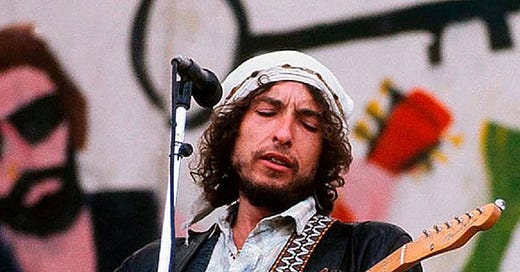


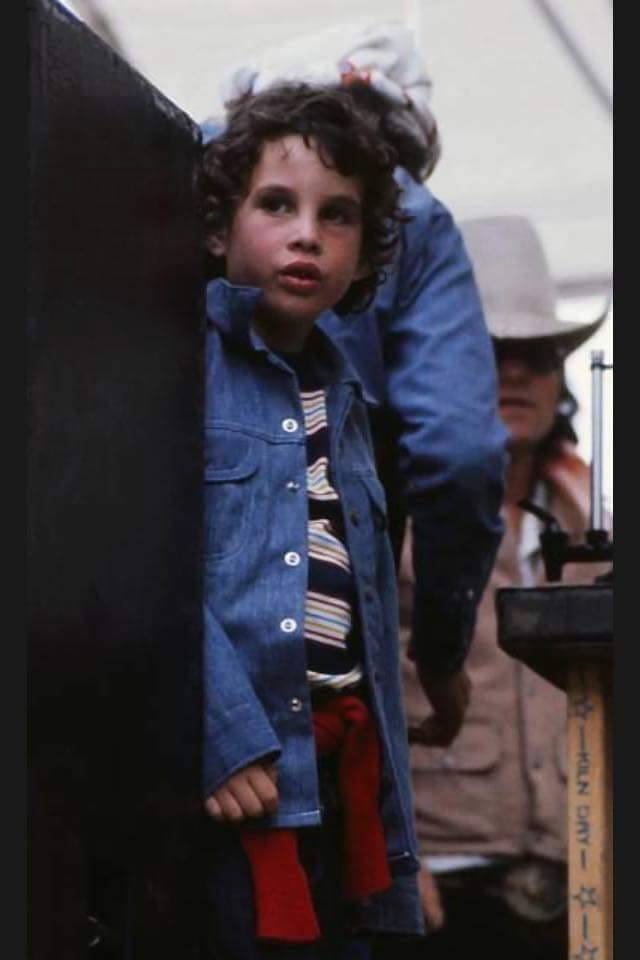
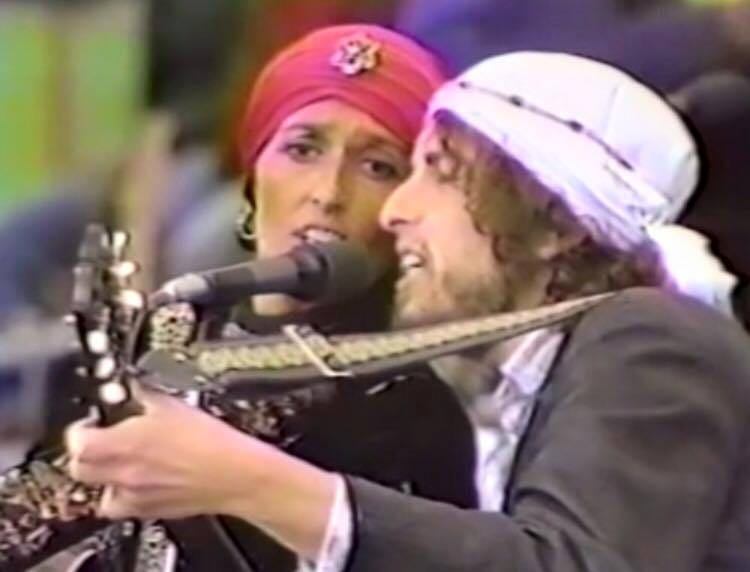
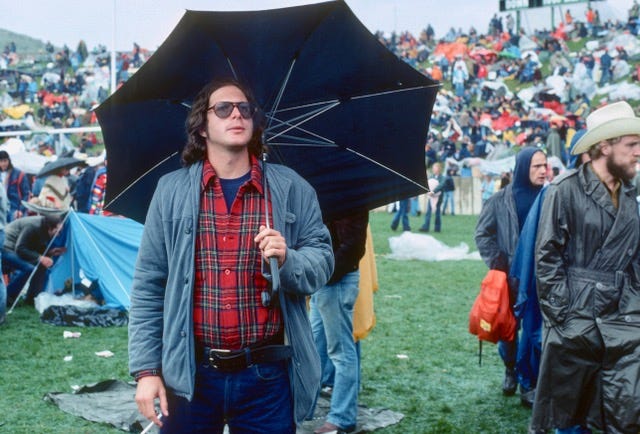
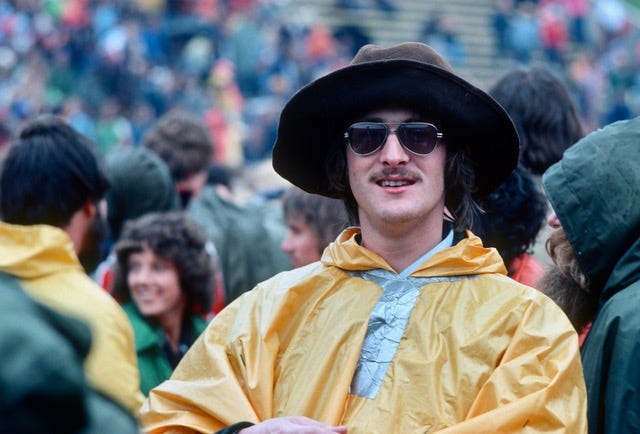
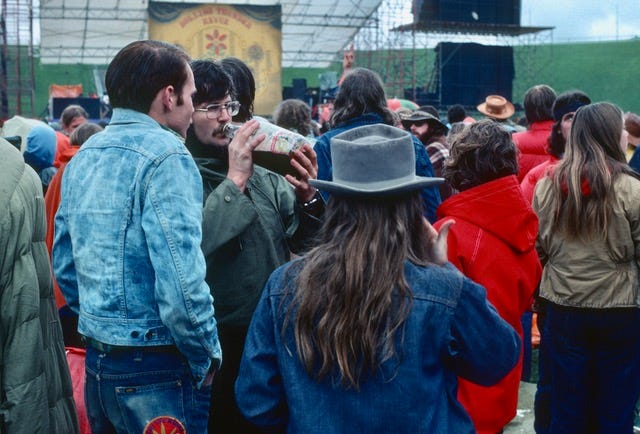
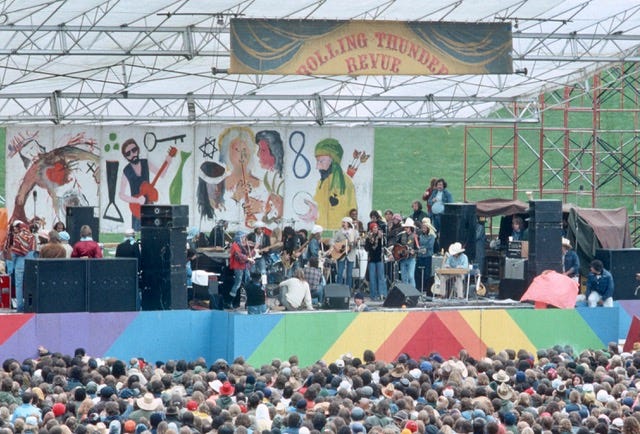
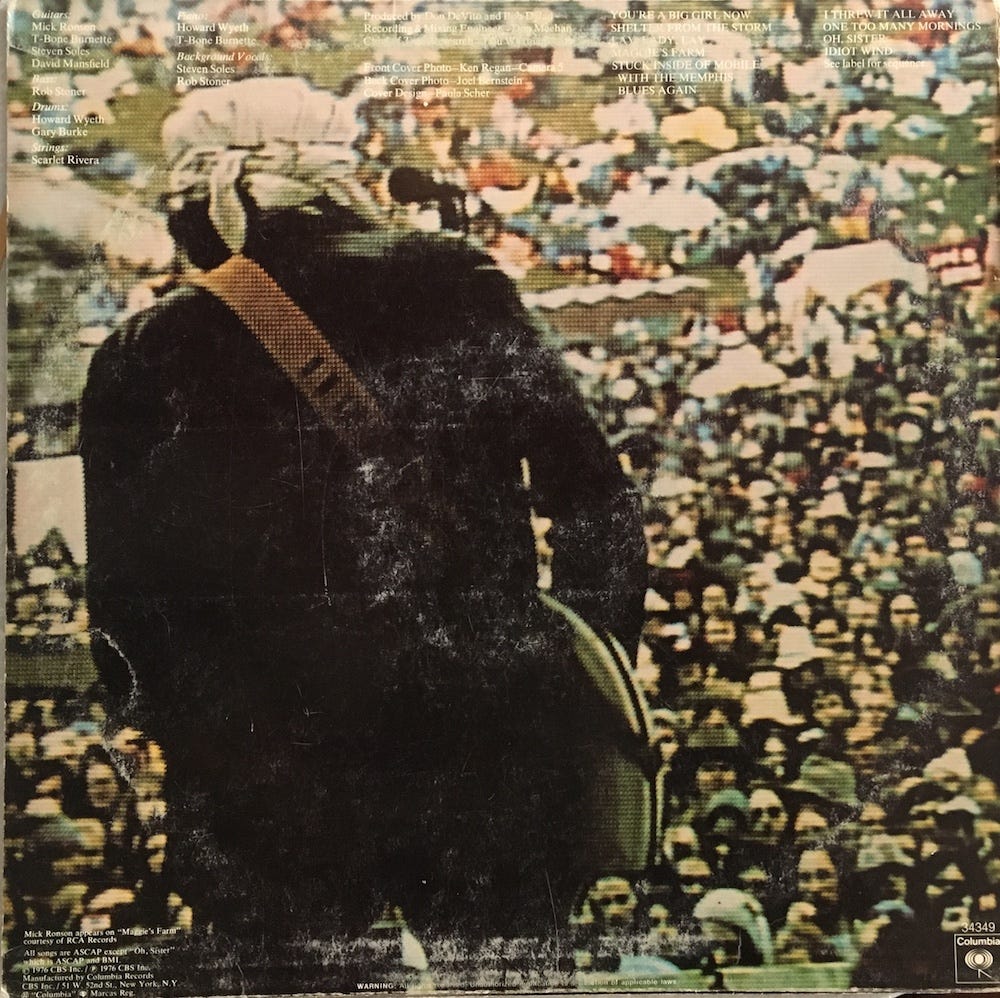
My "for god's sake, just (re)-release it already" list is slowly dwindling:
1. Beatles At The Hollywood Bowl - Check
2. Neil Young, Time Fades Away - Check
3. Let It Be original film - Check? We'll see come August. Excited about Peter Jackson's cut, but the original had better come with it.
4. Hard Rain TV special - Come on Sony, enough of 1975. Embrace the beautiful turbulence of '76 and just put it out already.
I listened to this today and read this great article. Thank you for preserving this moment—and I loved seeing the crowd photos!